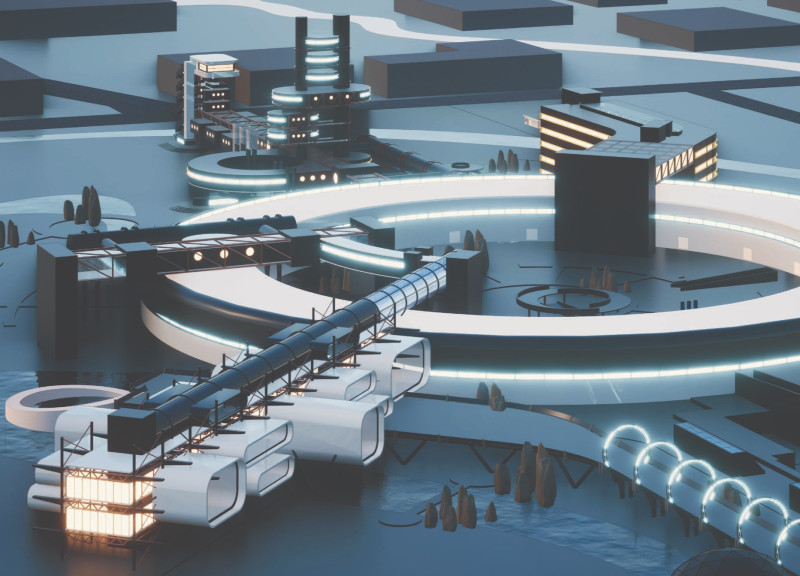5 key facts about this project
At its core, the project serves as a multifaceted space designed to accommodate a variety of activities, encouraging social interaction while allowing for individual contemplation. The primary function of this architectural endeavor is to provide a versatile environment that can adapt to the needs of its users, whether for community gatherings, educational opportunities, or recreational activities. The design promotes a sense of inclusivity and engagement, making it a valuable addition to the locale.
The architectural design prominently features an open layout that maximizes natural light and promotes airflow throughout the building. This aspect is significant, as it contributes to the overall wellbeing of the occupants while reducing reliance on artificial lighting and climate control systems. The layout effectively blurs the boundaries between indoor and outdoor spaces, creating a seamless transition that invites nature into the built environment. Large windows and strategically placed openings not only enhance the aesthetic quality of the design but also reinforce a connection to the surrounding landscape.
Materiality plays a crucial role in this project, with a thoughtful selection of materials that reflect sustainability and durability. The use of locally sourced stone, timber, and glass speaks to the project's ecological sensitivity, ensuring that the building harmonizes with its environment. The stone provides a robust and timeless quality, while the timber adds warmth and texture. Glass elements contribute to transparency and openness, allowing for visual connections between different areas of the building and the outdoors.
The design is also marked by unique structural features that elevate its architectural language. The integration of cantilevered sections creates dynamic overhangs that not only serve practical purposes in terms of sun shading but also contribute to the character of the silhouette. These design decisions enhance the visual appeal while ensuring that the form is functionally appropriate for the locale's climate.
Landscaping is another key component of the project, with green spaces thoughtfully woven into the architectural narrative. The outdoor areas complement the building's function, offering spaces for relaxation and recreation. Native plant selections reflect a commitment to biodiversity while providing low-maintenance solutions that enhance the overall sustainability of the site.
The project also prioritizes user experience by carefully considering circulation and accessibility. Pathways and entrances are designed to be welcoming, ensuring that all users, regardless of ability, can navigate the space with ease. This attention to detail reinforces the project's inclusive approach, promoting the idea that architecture should be accessible and beneficial for everyone.
Ultimately, this architectural design project embodies a thoughtful balance of aesthetics, function, and sustainability. The careful selection of materials, innovative structural solutions, and a deep understanding of user needs culminate in a design that is as practical as it is beautiful. Readers are encouraged to explore the project's presentation further, delving into architectural plans, architectural sections, and architectural ideas to gain a more comprehensive understanding of this engaging and thoughtfully conceived project.























